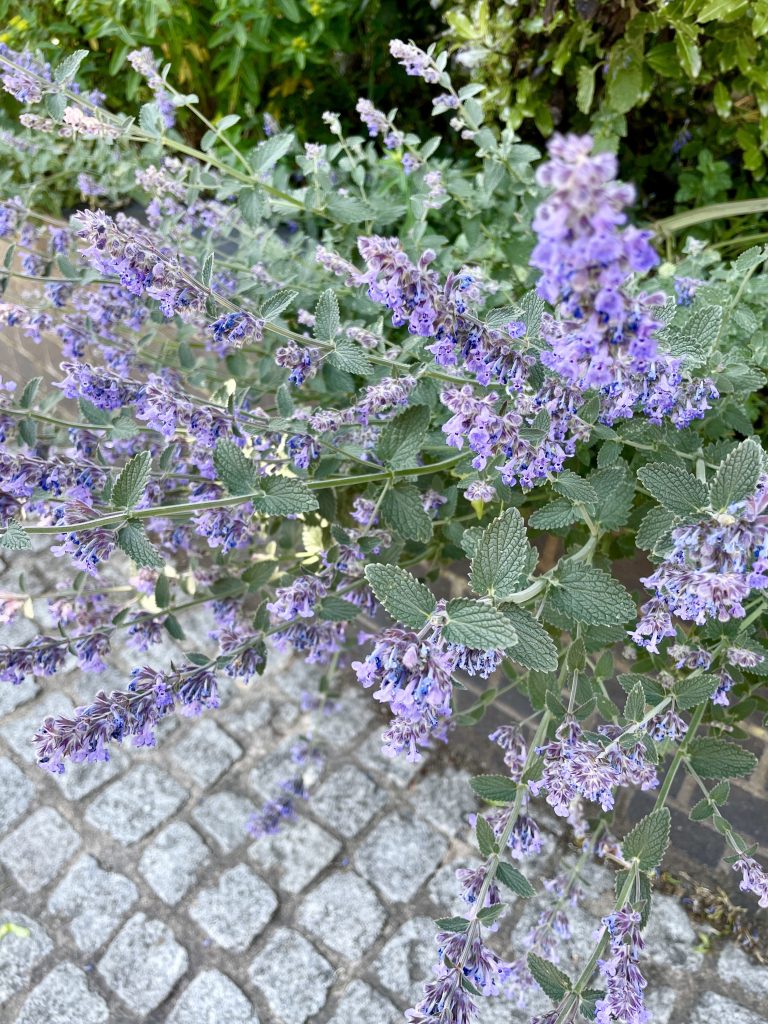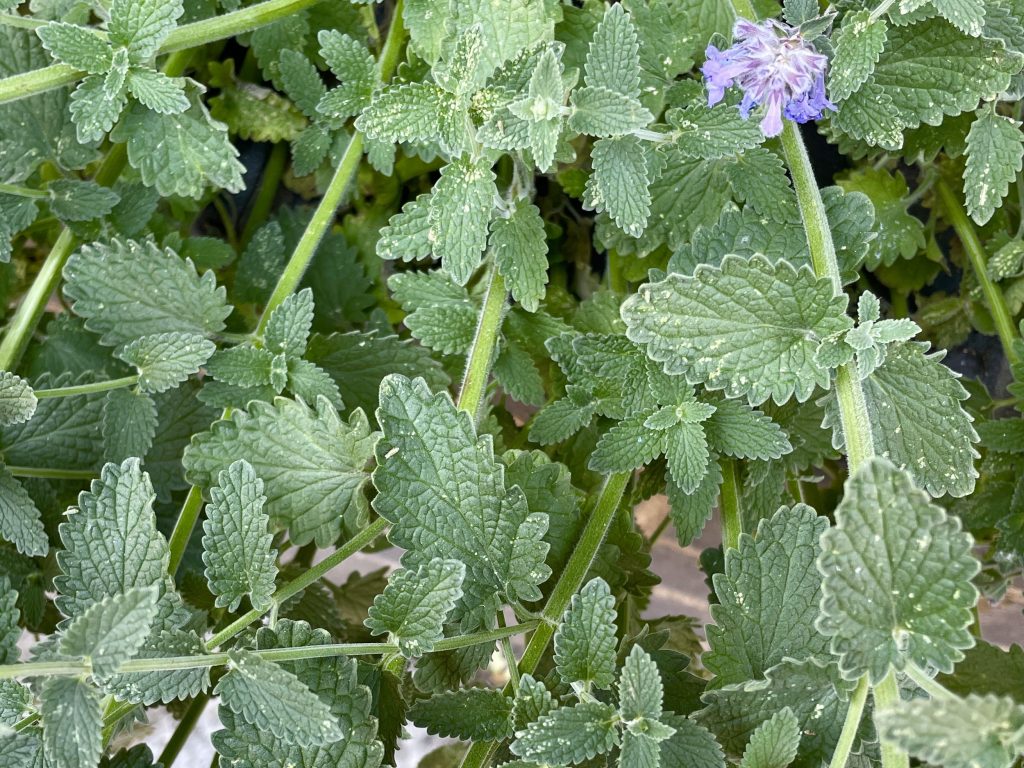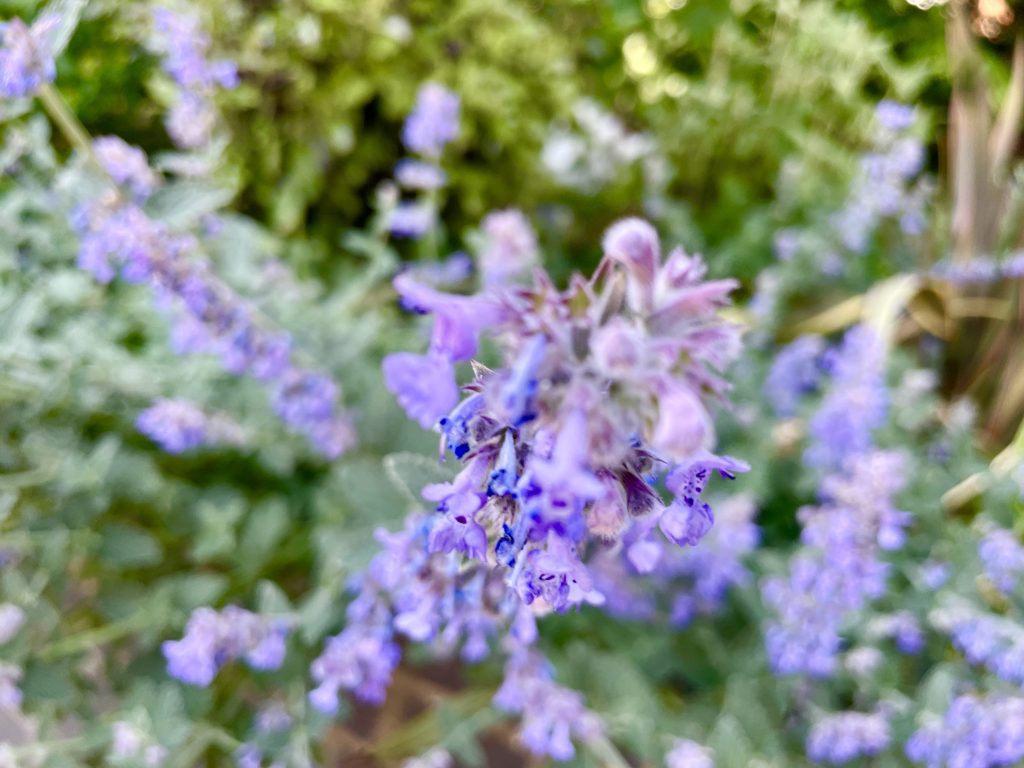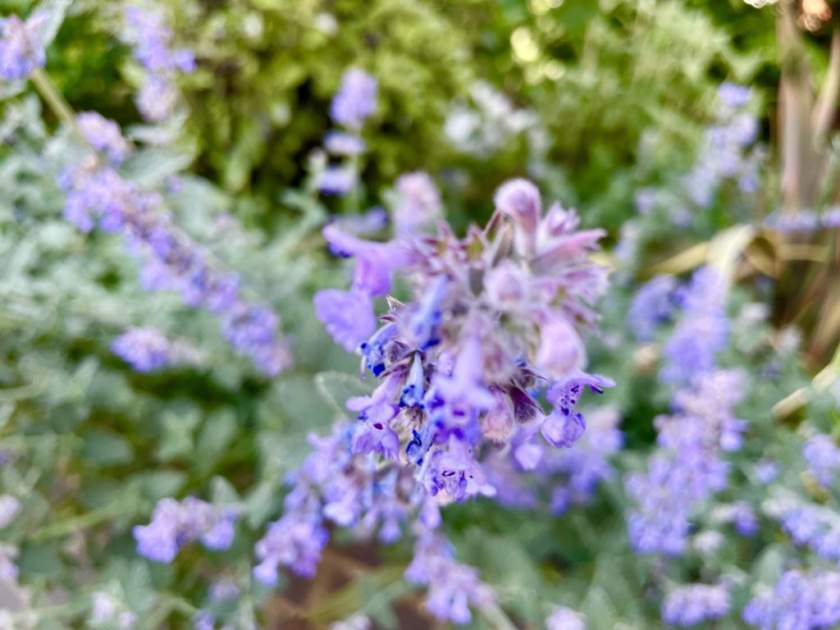Nepeta racemosa, commonly known as Cat Mint or Catmint, is an herbaceous perennial plant belonging to the Lamiaceae family. It is also referred to as Nepeta × faassenii. Native to the Caucasus, Iran, Iraq, and Turkey, Nepeta racemosa is appreciated for its spreading clump growth habit, grey-green foliage, and beautiful purple flowers. This plant is not only attractive to humans but also holds a special appeal for cats due to its aromatic leaves, reminiscent of catnip.
Nepeta racemosa typically forms a spreading clump with upright stems, reaching a height of about 1ft or 30cm. The grey-green leaves of this variety are ovate in shape, covered in fine hairs, and feature crenate margins. When the leaves are gently crushed, they release a pleasant aroma. The flowers of Nepeta racemosa vary in color, ranging from light to deep purple. They are arranged in racemes, giving rise to the species name “racemosa.” The flowering season primarily occurs in spring but may extend into summer and autumn, adding bursts of vibrant color to the garden. The presence of Nepeta racemosa in the landscape is sure to captivate both garden enthusiasts and feline companions alike.
Habitat and Origin: Nepeta racemosa is native to regions such as the Caucasus, Iran, Iraq, and Turkey. It thrives in various habitats within its natural range, including rocky slopes, meadows, and open woodlands. In these areas, it adapts to dry to medium moisture conditions, demonstrating its resilience and ability to grow in diverse environments.

How to grow Nepeta racemosa:
Light Requirements: Nepeta racemosa thrives in full sun to partial shade conditions. It performs best when provided with at least six hours of direct sunlight per day. However, it can tolerate some shade, especially during the hottest part of the day.
Soil and Drainage: Plant Nepeta racemosa in well-drained soil that ranges from dry to medium moisture levels. It is relatively adaptable to different soil types, including sandy or loamy soils. Nepeta racemosa can tolerate dry conditions, making it suitable for xeriscapes or gardens with low water availability.
Watering: Once established, Nepeta racemosa is relatively drought-tolerant. It prefers moderate moisture levels, and regular watering is necessary during prolonged dry spells or in areas with low rainfall. However, it is crucial to allow the soil to dry out between watering sessions to prevent waterlogged conditions and root rot.
Maintenance: Deadheading the faded flowers of Nepeta racemosa not only helps to prolong the blooming season but also promotes a tidy appearance. Removing spent blooms redirects the plant’s energy toward producing new flowers. Additionally, Nepeta racemosa has the tendency to self-seed, contributing to its spread in the garden. If self-seeding becomes excessive, you can remove the seed heads to control the spread.
Propagation: Nepeta racemosa can be propagated from seeds or divisions. Sow the seeds directly into the garden in early spring or start them indoors before the last frost. To divide the plant, carefully separate clumps in early spring or fall, ensuring each division has enough roots to establish itself when replanted.
Pest and Disease: Nepeta racemosa is generally disease-free and pest-free, making it a low-maintenance plant. However, it may occasionally encounter issues with powdery mildew, especially in humid or poorly ventilated conditions. To prevent powdery mildew, ensure proper air circulation around the plant and avoid overhead watering. If necessary, organic fungicides or neem oil can be used to control the fungal infection.

While Nepeta racemosa is not highly susceptible to pests, it may attract some common garden pests such as aphids, whiteflies, or spider mites. Regularly inspect the plant for any signs of infestation, and if detected, treat the affected areas with insecticidal soap or neem oil. Providing a diverse and balanced garden ecosystem can also encourage beneficial insects, such as ladybugs, lacewings, and predatory mites, which help keep pest populations under control.
By following these guidelines, you can successfully grow Nepeta racemosa and enjoy its beautiful flowers and aromatic foliage in your garden. Its adaptability, low maintenance requirements, and ability to attract pollinators make it a delightful addition to various garden styles and landscapes.





